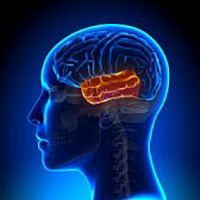 Find Out Which Part Of The Body This Functions!
Find Out Which Part Of The Body This Functions!
Our brain’s our comprised of four different areas, these areas include the frontal, occipital, temporal and parietal lobes. Each area holds specific functions for our bodies; some deal with our motor skills, others deal with other senses. In today’s article we’ll talk about the functions of the temporal lobe. This part of the brain can be found on the bottom middle part of the cortex, which is right behind the temples. It is responsible for processing auditor information from the ears. Keep on reading to find out more about the temporal lobes!
This part of the brain mainly revolves around hearing and selective listening. It purpose is to receive sensory information such as sounds and speech from the ears. It is also key to being able to comprehend, or understand someone talking to us, if it wasn’t for the temporal lobe. The temporal lobe is said to be special because it makes sense of all the different sounds and pitches being transmitted from the sensory receptors of the ears. Injuries are common in this part of the brain and treatment can often times be difficult as well, so find out more about this part of the brain now.
What Is The Temporal Lobe?
Once again, the temporal lobe folds underneath each half of the brain on either side, below the frontal and parietal lobes. This area of the brain houses our ability to receive and interpret auditory information from the ear. It also works to collect and interpret information from the nose. It is the primary area of the brain for dealing with sensory input.
There is a very important area of the this part of the brain called Wernicke’s area that gives us the ability to recognize speech and interpret the meaning of words. Damage to this area can lead to difficulty understanding speech and difficulty saying words that make sense. This is said to be a very important area for language and studies have previously shown that children begin understanding language they hear years before they can speak it.
What Injuries Can Occur In The Temporal Lobe?
There have been eight principle symptoms that have been associated with damages to this part of the brain. These eight damages discovered by Kolb & Wishaw (1990) include, disturbance to auditory sensation and perception, disturbance of selective attention of auditory and visual input, disorders of visual perception, impaired organizations and categorization of verbal material, disturbance of language comprehension, impaired long term memory and altered personality and affective behavior and altered sexual behavior.
Selective attention to visual or auditory input is common with damage to the temporal lobes. Lesions that occur on the left side result in decreased recall of verbal and visual content, including speech perception. Lesions on the right side result in decreased recognition of tonal sequences and many musical abilities. Language can often be affected by damage to this part of the brain, the left lobe disturbs recognition of words and the right can cause a loss of inhibition of talking. As far as being associated with memory skills, damage to the left side result in impaired memory for verbal material and right side result in recall of non-verbal material.
If you feel like you are at all experiencing signs or symptoms from damage to this part of the brain, please see your doctor.
